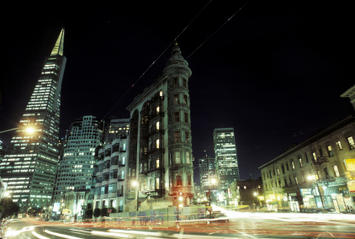
Initially San Francisco and the Bay Area market seemed to be immune to the financial meltdown resulting from the mortgage crisis. After all, the City and its accompanying affluent suburbs had not suffered drastic drops in home prices as seen in many other regions of the country. Yet as the mortgage crisis has snowballed into a complete meltdown of the worldwide financial system, the poster child of the ‘new economy’ now appears less and less immune from the turmoil dominating our news headlines.
The region that consists of the City by the Bay and the adjacent Silicon Valley is no stranger to drastic market corrections. Silicon Valley was front and center of the dot-com bubble burst at the early part of the decade. As it became abundantly clear that the dot-com frenzy was unsustainable, the region retracted as investment in internet startup companies waned severely.
This time the crisis is different. The current economic realignment is not limited by region but affirms the global interdependence of financial systems. The Bay Area may sit atop the economic food chain more than most regions, but its vulnerability to the crisis is not necessarily less than that of less elite areas.
Initially, much of core San Francisco’s resilience to the current economic conundrum can be attributed to the fact that the majority, approximately 65% of the city’s residents, are renters. But the greater Bay Area is being affected in other ways as a result of the financial crisis. As large banks fail, credit gets tighter and consumer confidence slows, business in sectors unrelated to real estate is beginning to be impacted. Case in point is Silicon Valley giant EBay recently laying off 10% of its workforce. Yahoo!, another large Bay Area employer, has also announced a significant reduction in staff. Even more troubling are moves by venture Capital Firms such as Sequoia Capital and Benchmark Capital to force companies in which they are stakeholders to ‘cut costs significantly’. With VC Firms tightening their belts, technology start-up companies, a primary driver of the Bay Area economy, are also likely to cut spending and employment.
These cuts will hit San Francisco proper, but far less than the Peninsula, where the vast bulk of the tech-related work takes place. In contrast, San Francisco is increasingly a ‘museum city’ for those wealthy enough to afford a vacation home. This will help keep local businesses in the retail, restaurant and hospitality industries somewhat strong.
The problems in the global, national and regional economy have touched off some alarms at the local level in San Francisco. Last week, Mayor Gavin Newsom announced his own version of an ‘economic stimulus plan.’ Under this plan, the city will lay off some government workers and continue to enforce a hiring freeze. The plan also calls for encouraging more foreign investment to the city. Capitalizing on a drop in lavish vacation spending by local residents, the Mayor is also looking to Bay Area dwellers to consider ‘staycations’ by spending time and money in the city rather than traveling outside the region. In a somewhat encouraging measure, the stimulus plan mentions reducing fees for local business and fast-tracking $5.3 billion worth of capital projects – both steps in the right direction.
San Francisco’s relative buoyancy in the dire economic situation also can be attributed to the fact that the city has lost much of its once powerful financial sector. In addition, the one financial giant that remains headquartered in the city, Wells Fargo, happens to be one of the U.S. banking institutions faring quite well due to its careful avoidance of subprime home loans. The ongoing strength of Wells Fargo means that more people who work in the San Francisco financial services industry will be able to hold onto their jobs.
Yet for all the relative good news, it is critical to realize that San Francisco remains an anomaly within the United States and should by no means serve as an economic model for other American cities. Most cities do not have the stunning geography and postcard-worthy locations needed to sustain a tourist economy. The unfortunate reality of San Francisco is that the gap between rich and poor residents continues to grow as the city’s middle class dwindles. Many of the city’s hospitality and retail workers are commuters from outside the city.
In fact, the situation in San Francisco reveals a growing irony: wealthy, sometimes very liberal bastions often have the least equality. As one of the most unaffordable places to live in the nation, the Bay Area has developed an economy that has little room for the middle or working class. It may have become far less vulnerable to the nation’s economic crisis, but in a manner that neither solves society’s broader problems nor provides a model for the vast majority of American communities.
Adam Nathaniel Mayer is a native of the San Francisco Bay Area. Raised in the town of Los Gatos, on the edge of Silicon Valley, Adam developed a keen interest in the importance of place within the framework of a highly globalized economy. He currently lives in San Francisco where he works in the architecture profession.













I actually like
I actually like what you have acquired here, certainly like what you are saying and the way in which during which you say it.Tỳ Hưu